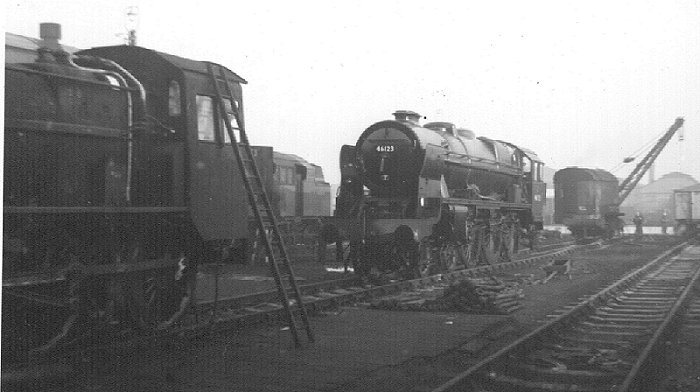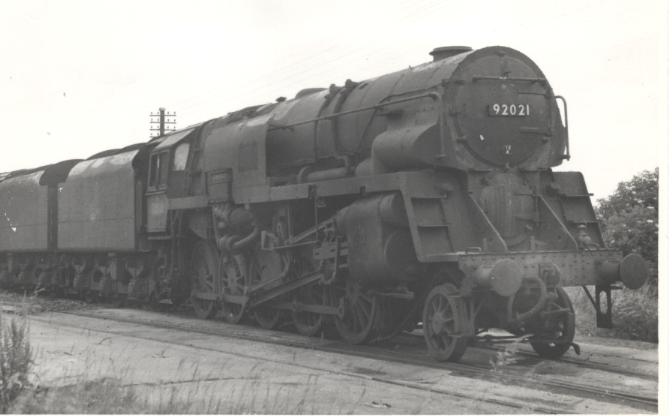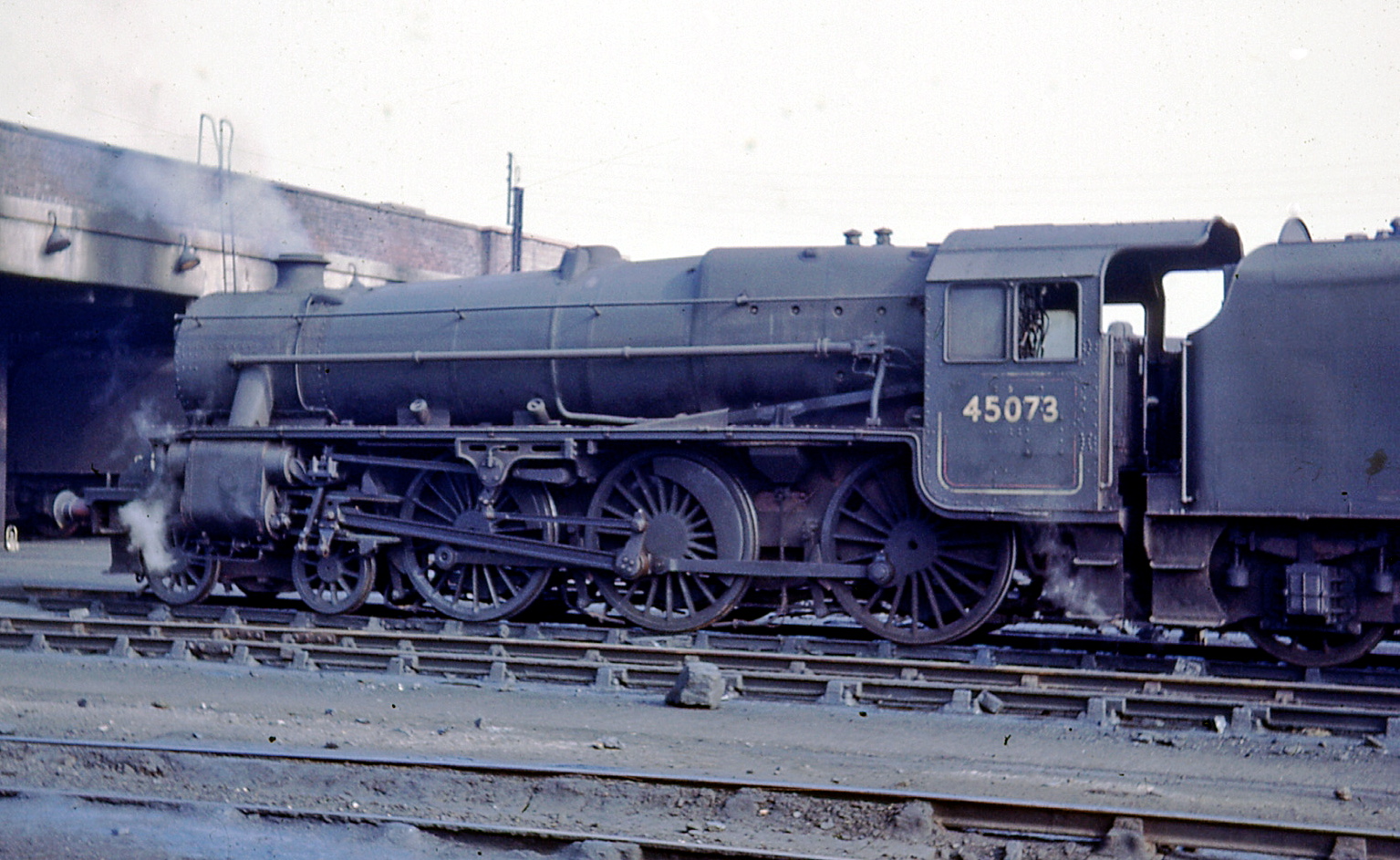|
Crewe Railway Works
Crewe Works is a British railway engineering facility located in the town of Crewe, Cheshire. The works, which was originally opened by the Grand Junction Railway in 1840, employed around 7,000 to 8,000 workers at its peak. In the 1980s, a lot of the engineering works were closed. Much of the site has been redeveloped but the remaining parts are owned and operated by French-owned multinational rolling stock manufacturer, Alstom SA. During the late 19th century, the London and North Western Railway used Crewe Works to produce many famous locomotives such as the Webb Jumbo class and the compounds, the Whale Experiment and Precursor classes, and the Bowen-Cooke Claughtons. In particular, Whale's 1912 superheated G1 Class developed from a locomotive introduced by Webb in 1892, lasted, in many cases until 1964, near the end of steam in 1968. After grouping, the works were taken over by London, Midland and Scottish Railway which was the successor to the LNWR. It was duri ... [...More Info...] [...Related Items...] OR: [Wikipedia] [Google] [Baidu] |
London & North Western Railway
The London and North Western Railway (LNWR, L&NWR) was a British railway company between 1846 and 1922. In the late 19th century, the L&NWR was the largest joint stock company in the United Kingdom. In 1923, it became a constituent of the London, Midland and Scottish (LMS) railway, and, in 1948, the London Midland Region of British Railways: the LNWR is effectively an ancestor of today's West Coast Main Line. History The company was formed on 16 July 1846 by the amalgamation of the Grand Junction Railway, London and Birmingham Railway and the Manchester and Birmingham Railway. This move was prompted, in part, by the Great Western Railway's plans for a railway north from Oxford to Birmingham. The company initially had a network of approximately , connecting London with Birmingham, Crewe, Chester, Liverpool and Manchester. The headquarters were at Euston railway station. As traffic increased, it was greatly expanded with the opening in 1849 of the Great Hall, designed by P ... [...More Info...] [...Related Items...] OR: [Wikipedia] [Google] [Baidu] |
Superheater
A superheater is a device used to convert saturated steam or wet steam into superheated steam or dry steam. Superheated steam is used in steam turbines for electricity generation, steam engines, and in processes such as steam reforming. There are three types of superheaters: radiant, convection, and separately fired. A superheater can vary in size from a few tens of feet to several hundred feet (a few metres to some hundred metres). Types * A radiant superheater is placed directly in radiant zone of the combustion chamber near the water wall so as to absorb heat by radiation. * A convection superheater is located in the convective zone of the furnace usually ahead of economizer (in the path of the hot flue gases). These are also called primary superheaters. * A separately fired superheater is a superheater that is placed outside the main boiler, which has its own separate combustion system. This superheater design incorporates additional burners in the area of superheater pipes ... [...More Info...] [...Related Items...] OR: [Wikipedia] [Google] [Baidu] |
Edge Hill Railway Works
Edge Hill railway works was built by the Liverpool and Manchester Railway around 1830 at Edge Hill, Liverpool. A second was built in 1839 by the Grand Junction Railway adjacent to it. Liverpool and Manchester Railway The shop initially maintained and repaired the company's existing fleet of thirty six engines, bought in from private makers, twenty seven from Robert Stephenson and Company. The first locomotive superintendent was John Dixon, followed by John Melling, then in 1840 by John Dewrance. In 1841 four 2-2-2 were built, followed by six more the following year, which also saw the production of 2-4-0 goods engines. By 1845 some twenty eight engines were built, at which time the L&MR was merged into the Grand Junction, and new building ceased, with the workshop closing in 1847. Grand Junction Railway Opening in 1839, the first Locomotive Superintendent was Thomas Melling. He was succeeded in 1840 by William Buddicom. An immediate problem was the frequency of broken crank a ... [...More Info...] [...Related Items...] OR: [Wikipedia] [Google] [Baidu] |
Crewe Works Railway
The Crewe Works Railway was a narrow gauge internal tramway system serving Crewe Works, the main locomotive construction works of the London and North Western Railway (LNWR) and later the London Midland and Scottish Railway (LMS). The system was first introduced by John Ramsbottom the LNWR Locomotive Superintendent from 1857 and it was a pioneering use of locomotive propelled vehicles within a manufacturing plant. The Crewe system was soon adopted elsewhere. There were four sections to this system built at different times and each in turn significantly altered several times before final abandonment. The four sections were: * The Original LNWR (Old) Works (authorised 17 October 1861) * The LNWR Steel Works (authorised 20 October 1864) * The LNWR Deviation Works (built in the late 1860s) * The Spider Bridge extension to Crewe railway station (built in 1878). Of the above, the first section dating from 1862 was within the original locomotive works first built in 1843 and expand ... [...More Info...] [...Related Items...] OR: [Wikipedia] [Google] [Baidu] |
BR Standard Class 9F 92020-9
British Railways Standard Class 9F steam locomotives Nos 92020-9 were experimentally built with Franco-Crosti boilers, thus forming a subclass. All ten were built in 1955 at Crewe Works. The Franco-Crosti boiler took the form of a single cylindrical water drum running along the underside of the main boiler barrel; the standard chimney at the front was only used during lighting-up, in normal working the gases went through firetubes inside the preheater drum that led to a second smokebox situated beneath the boiler from which there emerged a chimney on the right-hand side (fireman's), just forward of the firebox. Limitations of the British loading gauge meant that the original BR9 boiler had to be reduced in diameter to allow for the preheater drum below it. This new BR9A, later BR12, boiler had a reduced heating surface compared to the original, even with the additional preheater. Without the preheater, there was over 1,000 sq ft less heating surface. In the event, the expe ... [...More Info...] [...Related Items...] OR: [Wikipedia] [Google] [Baidu] |
BR Standard Class 7
The BR Standard Class 7, otherwise known as the ''Britannia'' Class, is a class of 4-6-2 ''Pacific'' steam locomotive designed under Robert Riddles for use by British Railways for mixed-traffic duties. 55 were constructed between 1951 and 1954. The design employed results from the 1948 locomotive exchanges undertaken in advance of further locomotive classes being constructed. Three batches were constructed at Crewe Works, before the publication of the 1955 Modernisation Plan. The ''Britannia'' Class design was based on best practice from the pre-nationalisation railway companies in terms of operating efficiency and lower maintenance costs;Loco Profile 12, BR Britannias. Brian Haresnape. Profile Publications. 1971 various weight-saving measures also increased the route availability of a ''Pacific''-type locomotive on the British Railways network. The ''Britannias'' received a positive reception from their crews, with those regularly operating the locomotives giving them f ... [...More Info...] [...Related Items...] OR: [Wikipedia] [Google] [Baidu] |
British Railways
British Railways (BR), which from 1965 traded as British Rail, was a state-owned company that operated most of the overground rail transport in Great Britain from 1948 to 1997. It was formed from the nationalisation of the Big Four British railway companies, and was privatised in stages between 1994 and 1997. Originally a trading brand of the Railway Executive of the British Transport Commission, it became an independent statutory corporation in January 1963, when it was formally renamed the British Railways Board. The period of nationalisation saw sweeping changes in the railway. A process of dieselisation and electrification took place, and by 1968 steam locomotives had been entirely replaced by diesel and electric traction, except for the Vale of Rheidol Railway (a narrow-gauge tourist line). Passengers replaced freight as the main source of business, and one-third of the network was closed by the Beeching cuts of the 1960s in an effort to reduce rail subsidies. On privatis ... [...More Info...] [...Related Items...] OR: [Wikipedia] [Google] [Baidu] |
LMS Coronation Class
The London, Midland and Scottish Railway (LMS) Coronation Class is a class of express passenger steam locomotives designed by William Stanier. They were an enlarged and improved version of his previous design, the LMS Princess Royal Class, and on test were the most powerful steam locomotives ever used in Britain at 2,511 dbhp. The locomotives were specifically designed for power as it was intended to use them on express services between London Euston and Glasgow Central; their duties were to include the hauling of a proposed non-stop express, subsequently named the ''Coronation Scot''. The first ten locomotives of the Coronation class were built in a streamlined form in 1937 by the addition of a steel streamlined casing. Five of these ten were specifically set aside to pull the ''Coronation Scot''. Although a later batch of five unstreamlined locomotives was produced in 1938, most of the ensuing Coronation class were outshopped as streamliners. From 1944 until production ende ... [...More Info...] [...Related Items...] OR: [Wikipedia] [Google] [Baidu] |
LMS Princess Royal Class
The London, Midland and Scottish Railway (LMS) Princess Royal Class is a class of express passenger 4-6-2 steam locomotive designed by William Stanier. Twelve examples were built at Crewe Works, between 1933 and 1935, for use on the West Coast Main Line. Two are preserved. Overview The Princesses are related to the GWR 6000 Class (also known as the King Class), the general outline essentially being a King with a larger firebox supported by additional trailing wheels. This origin is explained by the designer William Stanier coming from the GWR to the LMS. When originally built, they were used to haul the famous ''Royal Scot'' train between London Euston and Glasgow Central. Construction A prototype batch of three locomotives was to be constructed in 1933. Two were constructed as drawn but the third set of frames was retained as the basis for an experimental turbine locomotive. Turbomotive The third prototype was constructed with the aid of the Swedish Ljungstrom tu ... [...More Info...] [...Related Items...] OR: [Wikipedia] [Google] [Baidu] |
LMS Stanier Class 5 4-6-0
The London, Midland and Scottish Railway (LMS) Stanier Class 5 4-6-0, commonly known as the Black Five, is a class of steam locomotives. It was introduced by William Stanier and built between 1934 and 1951, of which 842 were built and were numbered 4658-5499 (BR then renumbered 44658-45499). Several members of the class survived to the last day of steam on British Railways in 1968, and eighteen are preserved. Origins The Black Five was a mixed-traffic locomotive, a "do-anything go-anywhere" type, designed by Stanier, who had previously been with the GWR. In his early LMS days, he designed his Stanier Mogul in which he experimented with the GWR school of thought on locomotive design. A number of details in this design he would never use again realising the superiority of details not used on the GWR. Stanier realised that there was a need for larger locomotives. These were to be the LMS version of the GWR Halls but not a copy, as the Hall was too wide to run most places in Br ... [...More Info...] [...Related Items...] OR: [Wikipedia] [Google] [Baidu] |
LMS Jubilee Class
The London Midland and Scottish Railway (LMS) Jubilee Class is a class of steam locomotive designed for main line passenger work. 191 locomotives were built between 1934 and 1936. They were built concurrently with the similar looking LMS Stanier Class 5 4-6-0. They were nicknamed ''Red Staniers'' (due to their crimson liveries) and ''Jubs''. History The last five locomotives of Henry Fowler's Patriot class on order, 5552 to 5556, were built with William Stanier's taper boiler and so became the first of the Jubilee class. 113 locomotives were ordered straight from the drawing board. They were initially a disappointment; their moderate degree of superheating often left them short of steam. Changes to the blastpipe and chimney dimensions helped to transform them. On 29 April 1935 no. 5552, the first of the class, permanently swapped identities with no. 5642 which had been named ''Silver Jubilee'' on 19 April 1935 in recognition of the Silver Jubilee of King George V on 6 May of ... [...More Info...] [...Related Items...] OR: [Wikipedia] [Google] [Baidu] |
Sir William Stanier
Sir William Arthur Stanier, (27 May 1876 – 27 September 1965) was a British railway engineer, and was chief mechanical engineer of the London, Midland and Scottish Railway. Biography Sir William Stanier was born in Swindon, where his father worked for the Great Western Railway (GWR) as William Dean's Chief Clerk, and educated at Swindon High School and also, for a single year, at Wycliffe College. In 1891 he followed his father into a career with the GWR, initially as an office boy and then for five years as an apprentice in the workshops. Between 1897 and 1900 he worked in the Drawing Office as a draughtsman, before becoming Inspector of Materials in 1900. In 1904, George Jackson Churchward appointed him as Assistant to the Divisional Locomotive Superintendent in London. In 1912 he returned to Swindon to become the Assistant Works Manager and in 1920 was promoted to the post of Works Manager. In late 1931, he was "headhunted" by Sir Josiah Stamp, chairman of t ... [...More Info...] [...Related Items...] OR: [Wikipedia] [Google] [Baidu] |




.jpg)




.jpg)